Smeg ECF01 espresso machine review – perfect for small spaces, but is it worth the splurge?
It's cute, compact, and colorful, but for $500, it's a big commitment.
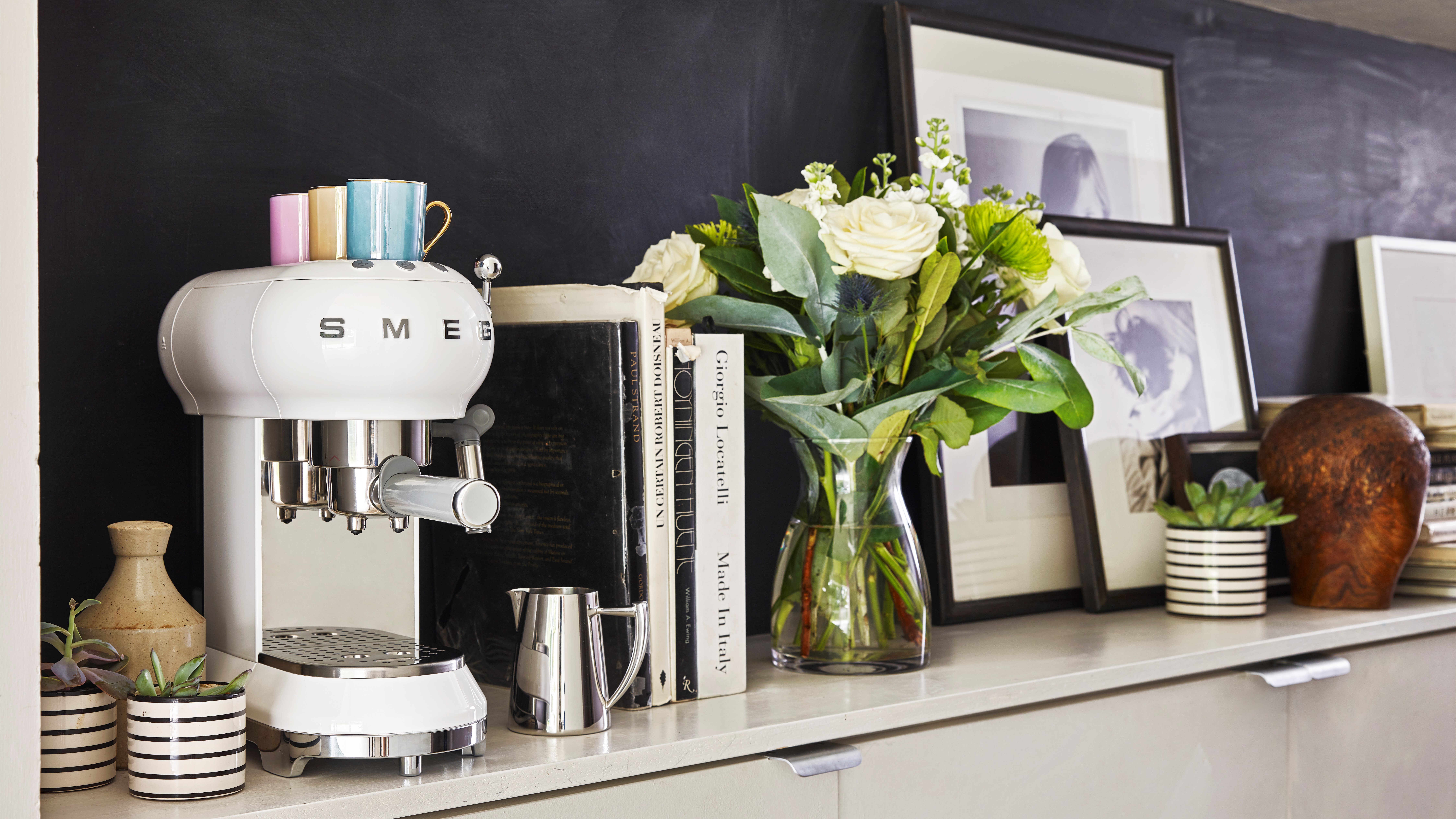
Espresso beginners will get on the best with this straightforward and great-looking machine, while for those looking for an authentic barista-style machine there simply aren’t enough adjustable settings to impress coffee connoisseurs.
-
+
Easy to use
-
+
Takes ESE pods
-
+
Comes in seven colors
-
+
Compact
-
+
Preheats quickly
-
-
Plastic construction
-
-
Not enough space for tall cups
-
-
Short steam wand
You can trust Homes & Gardens.

Laura Honey
Smeg’s retro-style appliances are iconic. Top-quality, distinctive, and stylish, they stand out from the crowd – and this espresso machine is no exception. With its rounded shape and a range of vibrant colors to choose from, it offers something refreshingly different from the norm.
As espresso machines go, this is an entry-level option that’s great for beginners. It can make single or double espressos using pre-ground coffee or Easy Serve Espresso (ESE) pods, and there's a steam wand for frothing milk or dispensing hot water. But if you’ve owned one of the best espresso machines before or want lots of customizable settings, you may be left wanting more.
Smeg has since upgraded this model to the Smeg ECF02, which looks sleeker, offers more space between the brew head and drip tray, and includes different temperature options. So, if you love the aesthetics of this design, you'll be technically better off investing in the newer version.
This machine was originally tested by Helen, one of our experts, in her home. As a barista, I wanted to take it to our test kitchen a year later to see how it would perform under more intense conditions. We both enjoyed using this stylish espresso machine – it might not be the most technically advanced, if you’re a beginner, this is a very chic place to start.
Specifications
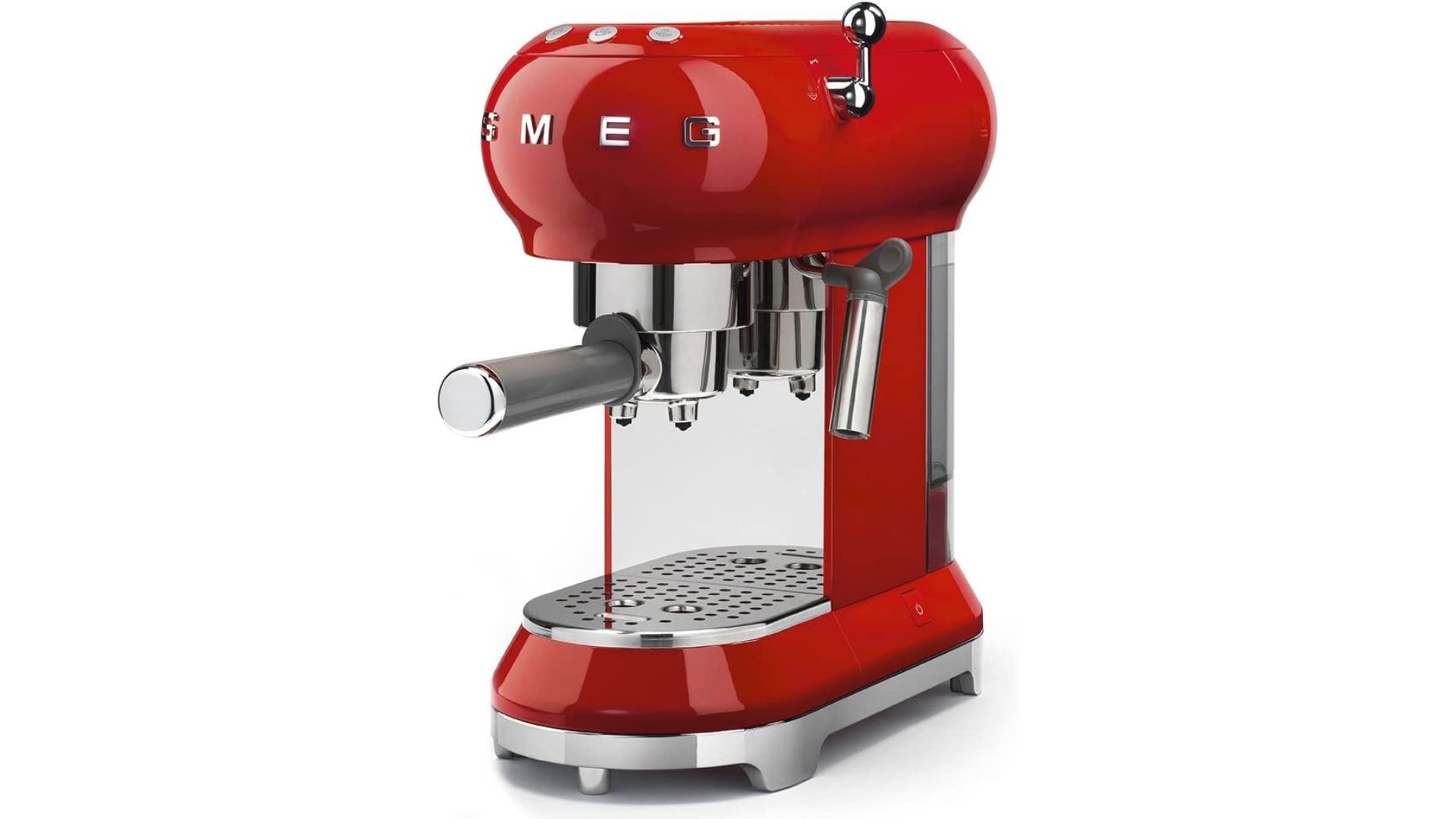
Model | ECF01 |
Dimensions | 13"H x 5.9"W x 13"D / 330x149x329 mm |
Water tank capacity | 1 liter |
Pressure | 15 bar |
Weight | 10.4 lbs |
Power | 1550W |
Material | stainless steel and plastic |
Unboxing
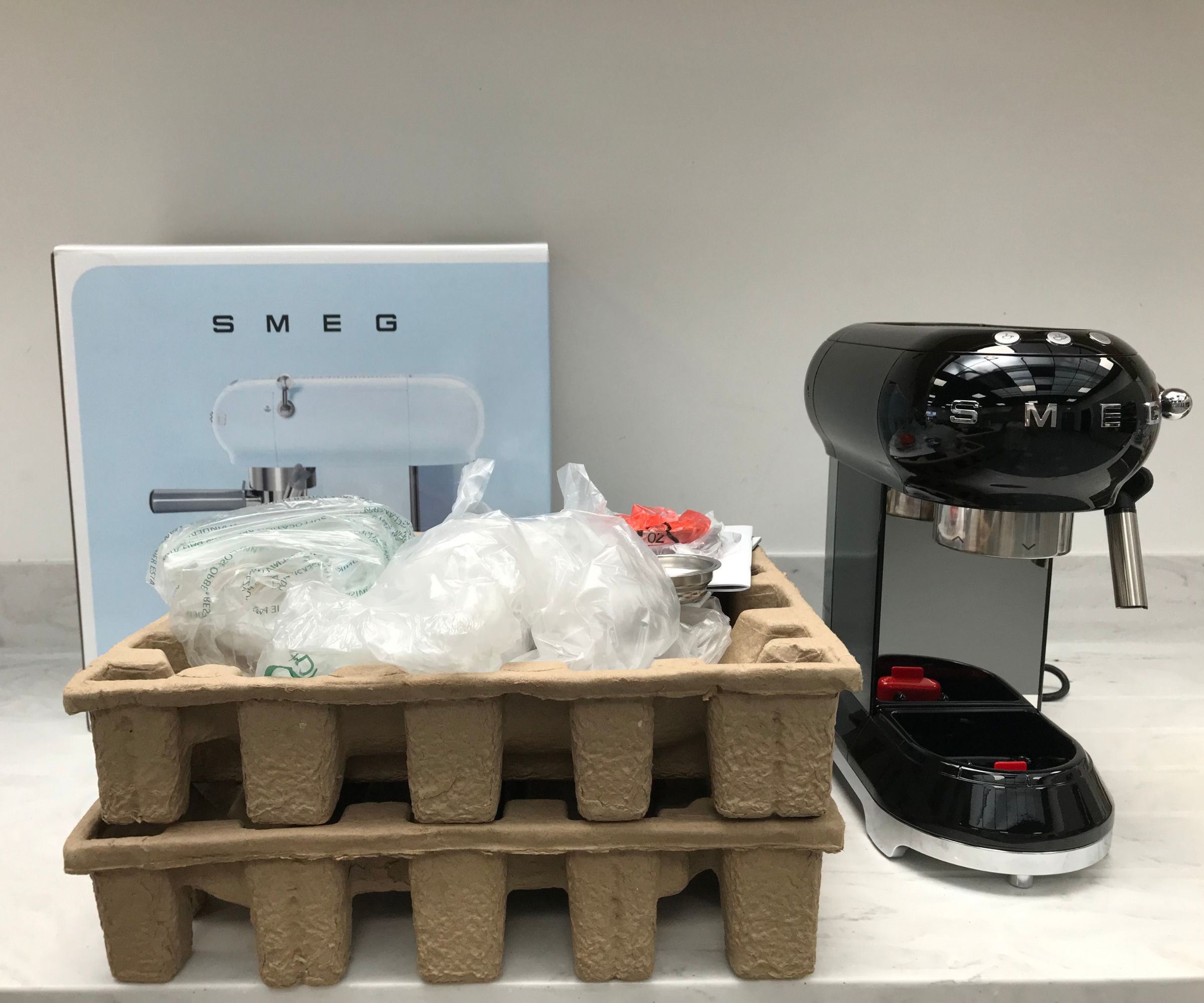
The Smeg ECF01 espresso machine looks retro, but it's actually lightweight and pretty compact. The first thing that strikes me on removing it from the box is that there’s a lot of molded plastic on the exterior, which I guess contributes to the lightweight feel. But for me, it lacks the sturdy, robust quality that I’d like to see from a coffee maker at this price.
It comes with a portafilter and coffee tamper, which doubles up as a scoop. The portafilter is weighty and feels sturdier than I expected, especially in comparison to the rest of the machine. It also comes with three interchangeable filters, one for single shots, one for double shots, and one for use with ESE pods. You can tell which is which because it’s engraved on the bottom.
I was disappointed not to find a milk frothing pitcher in the box, this is something you’ll have to purchase separately. I’d recommend one like this from Walmart, because the milk steamer is quite shallow. I was also surprised that there wasn’t a water softener filter included or any descaling solution to get you started. Both of these are often provided with other espresso machines as part of the starter pack.
Design expertise in your inbox – from inspiring decorating ideas and beautiful celebrity homes to practical gardening advice and shopping round-ups.
Who would it suit?

Smeg certainly prioritizes style. If you’ll leave your espresso machine on display and you care about how it looks, this is an excellent option. It’s won a Good Design Award and a Red Dot Design Award, so it’s not short of design credentials. Plus there’s even a version designed in collaboration with Dolce & Gabanna, featuring a unique and eclectic pattern that’ll be the talk of your kitchen.
Espresso machines can get really complicated, so this is well-suited to beginners. It's simply a matter of pushing a button before you get an espresso. However, these crude controls mean that you can’t adjust the strength or brew time. If you fancy yourself a coffee connoisseur, this might become frustrating for you. You’ll also notice that there’s no grinder. If you already own one, this is brilliant, because it means that you don’t need to pay more money for a redundant feature. However, if you don’t already have one, you might want to have a look for a good coffee grinder.
What is it like to use?

The initial setup is pretty straightforward. Once the water tank has been washed and filled, it slots into place at the back of the machine and a big plastic lid covers it to complete the retro look. Then, all you need to do is twist the empty portafilter into place and press the double espresso button to run hot water through the internal circuits. You have to do this five times before dispensing 100ml from the steam nozzle, which is both tedious and wasteful. However, after this, it’s set up and ready to go.
There are some general settings you can adjust at this stage too. The manual walks you through how to use the three main buttons to access a settings menu. You will need the manual, as this isn’t an intuitive process. I’d recommend adjusting the water hardness to reflect the water you’re using.
Test 1: Espresso
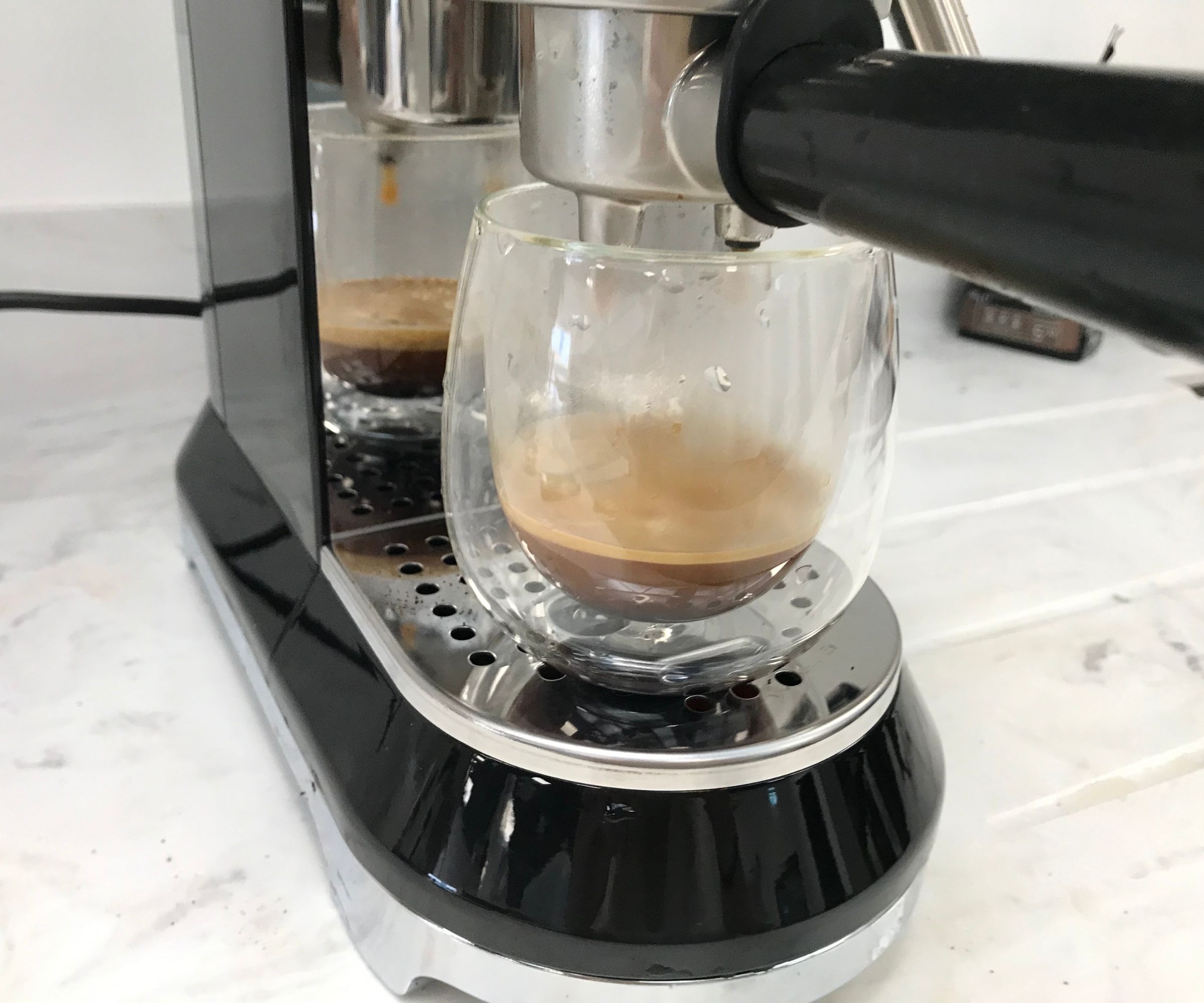
The instruction manual advises one level scoop of coffee for the single shot filter basket. This weighs sixteen grams, so I added a little more. Eighteen grams is my perfect amount, but you can change it depending on your taste preferences. If you tamp the coffee grounds too firmly, the machine will struggle to force water through the coffee grounds, so be firm, but not aggressive when you tamp. It takes 15 seconds to brew a single shot and the coffee came out at 162°F/ 72°C which is ideal for me.
A double espresso was dispensed at a similar temperature and unsurprisingly it took double the time. It's useful to have a scoop, because you can do two scoops of coffee for a double espresso. However, if you want to get really technical, I'd recommend investing in some coffee scales, such as these from Walmart. In the double filter, two-level scoops of coffee is too much. It was tough to twist the portafilter into position, so I used about one and three-quarter scoops.
The double shot dispenses around 2 oz/ 70ml, which is standard and perfect for my morning cappuccino. But this can be adjusted in the settings menu to any volume you like. My espresso was really smooth, slightly sweet, and perfectly aromatic. Overall, it was a faultless brew.
Making espresso is simple enough, you can’t go wrong once you’ve worked out how firmly to tamp the coffee grounds. But there are a couple of annoying details; when twisting the portafilter into position, the rest of the machine isn’t weighty enough to stand up to the force, so you have to hold it to the counter with your other hand to stop it moving.
Test 2: Americano

When I used my taller mug I noticed the next biggest flaw in this machine: there's not enough space for a standard mug on the drip tray, you can only fit a small cup around 3.1 inches tall. If you remove the drip tray, there’s space to fit a 4.7 inch tall mug, but if your favorite mug is taller, you’re out of luck. Furthermore, after dispensing the espresso, coffee continues to drip from the portafilter for a little while, so it’s best to leave the cup in place for a minute or so.
Once you've pulled an espresso, you can use the steam wand to add some hot water to your espresso. Hot water is dispensed from the steam wand by moving the steam lever without first pressing the steam button. It comes out at 185 degrees Fahrenheit which is ideal for herbal or fruit teas. It tasted smooth, but was definitely on the acidic side of coffee. I think that's because it was one of the first that I brewed, so it was still adjusting.
Test 3: Cappuccino

Milk is best steamed in a stainless-steel pitcher to allow you to feel the temperature of the milk by cupping the outside of the pitcher, but you’ll have to buy one like this separately. The steam function heats up in just 10 seconds, which is quick for such a basic machine.
For me, the steam wand is a little too short and while the angle can be adjusted, it doesn’t have enough adjustability. The milk heats up fast, but becomes very foamy and it’s not easy to create the fine silky micro bubbles that make the perfect cappuccino. I did manage it, but not consistently.
The other point to note is that if you’ve just steamed milk, you can’t immediately make another espresso without going through a process of dispensing water to cool the boiler down. So it’s best to make all the espressos you need before steaming milk.
Test 4: ESE pods

I didn't test these pods, but Helen did. Easy Serve Espresso pods are like tea bags full of ground coffee and they pop straight into the portafilter. They’re quick and mess-free, but will only dispense a single shot of coffee. I think, if you have an espresso machine, you should make the most of using freshly ground coffee, so I always use beans and a grinder. However, I know that can be time-consuming. They’re very easy to use and the coffee dispensed had a good thick pale crema. But if you only want to use pods, you’d be better off looking at a single-serve pod machine instead.
Cleaning, Storage, and Maintenance
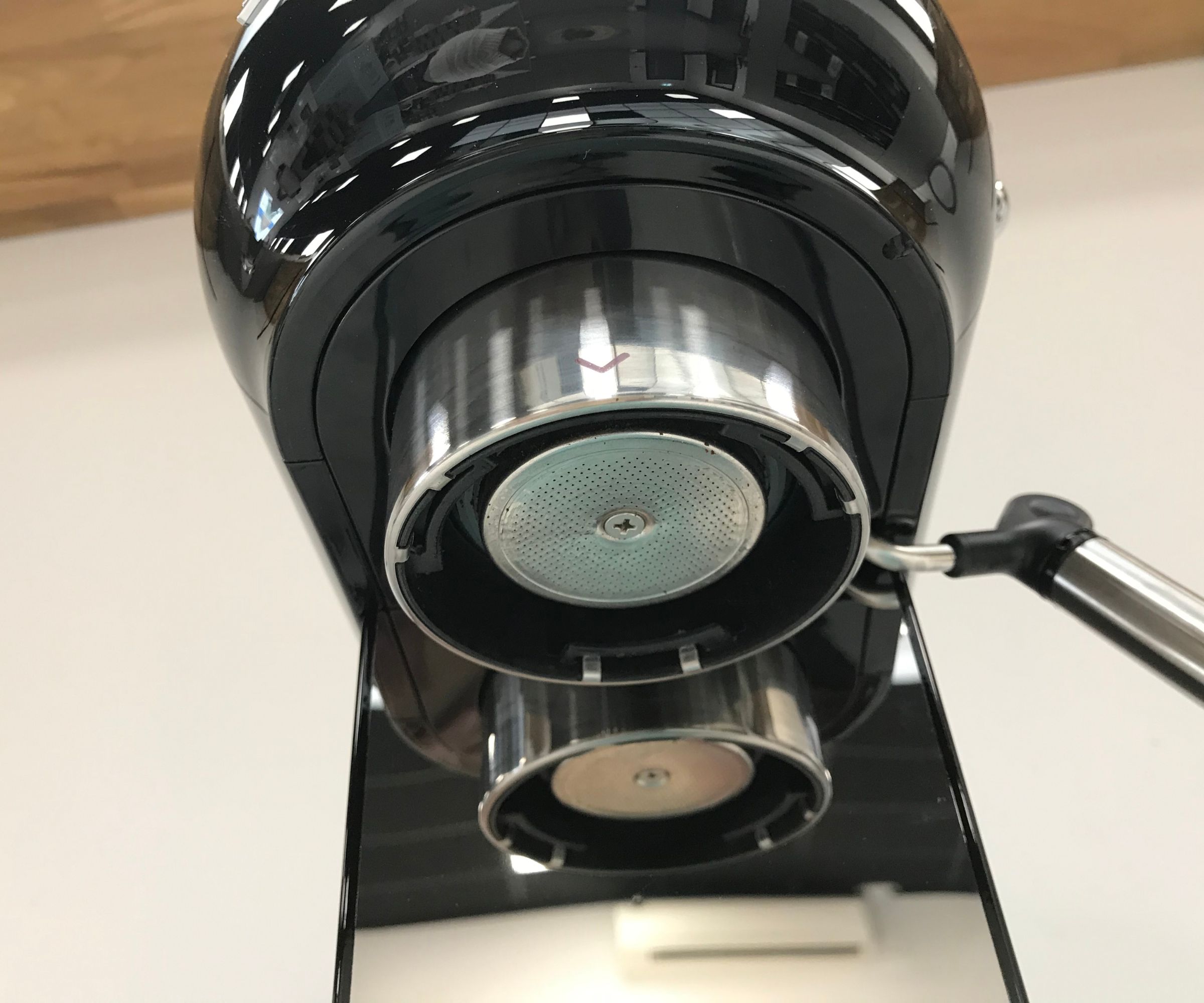
Daily cleaning is quick and simple. When the drip tray fills, a red float pops up to alert you to empty it and the whole tray can be removed and rinsed in the sink. After steaming milk, the steam wand can be removed with a simple twist and the rubber nozzle underneath pulls downwards to release. Both can be cleaned with a quick rinse and then replaced.
The portafilter didn’t release the coffee granules when I tried to tap them out, so I had to remove them with a spoon before rinsing to wash away any residues. The rest of the machine can be wiped with a damp cloth to keep it clean. But you do have to pay particular attention to the mirrored backplate and the shiny cup tray as these can mark easily.
When it needs descaling the steam button will illuminate with an orange light. The process is similar to most other machines, whereby you need to add water and descaler to the water tank and start the automatic descaling cycle, followed immediately by an automatic rinsing cycle with plain water.
How does it rate online?
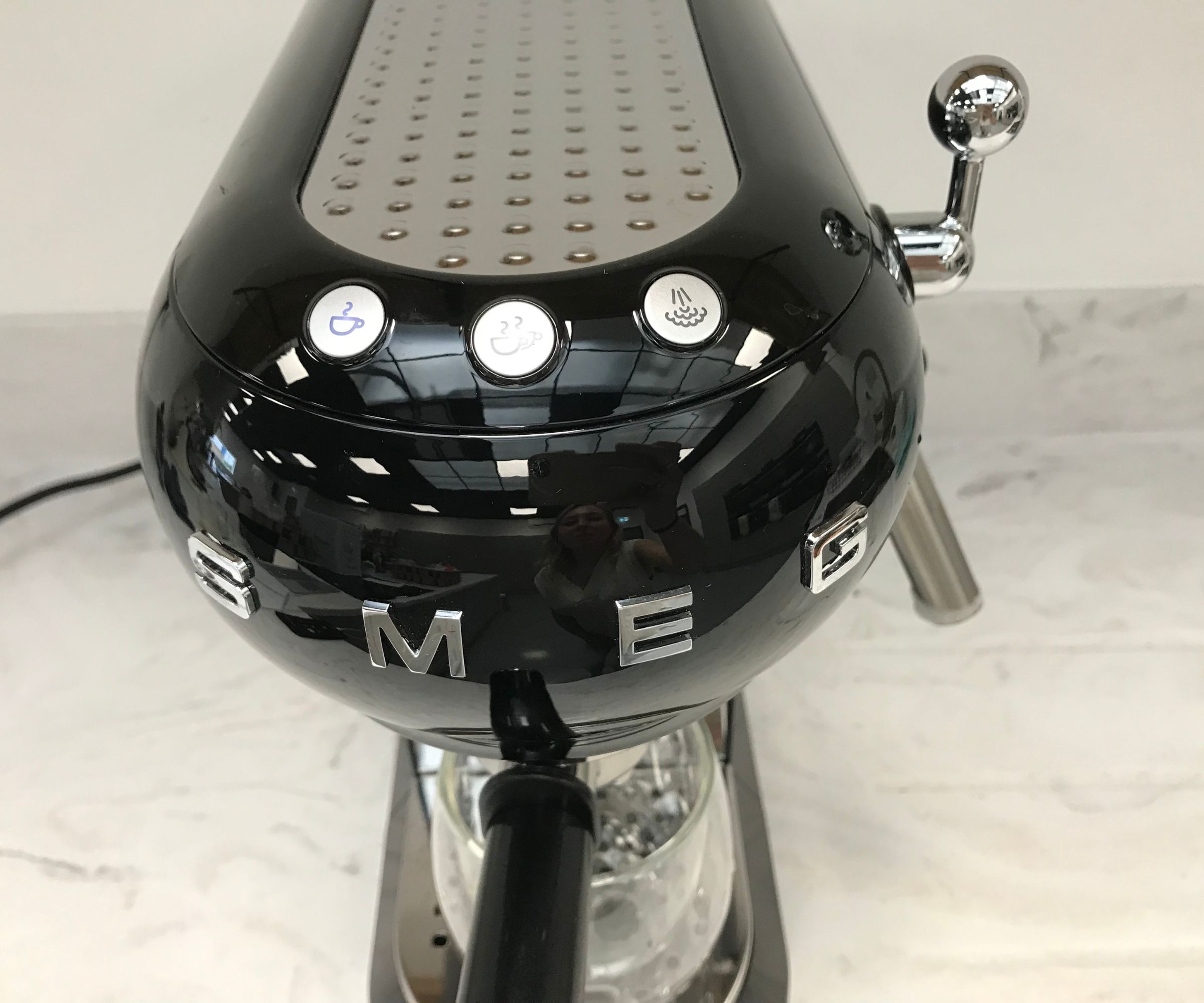
Online reviews for this are mixed. Customers and reviewers unanimously agree that this looks beautiful. It’s lightweight, slim, and easy to use. However, at around $500, customers expect more. The tamper and overall quality make this feel like it’s not incredible value for money. The low brew head and small steam wand make this really fiddly to steam milk with, a grievance almost everyone raises. If you don’t mind more faff, this makes great coffee and it looks stylish. However, there are other options for more technical coffee makers.
How does it compare?
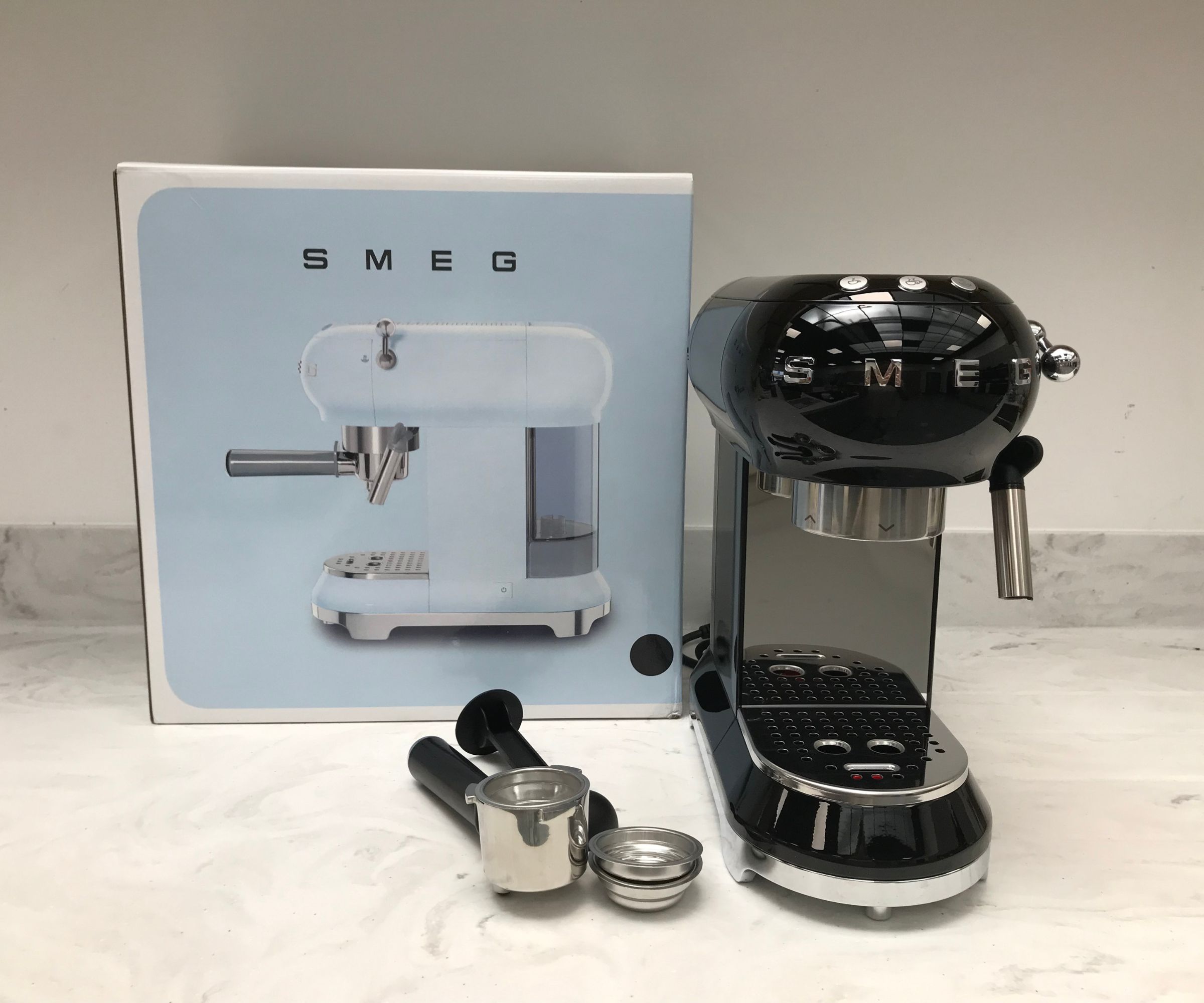
As I mentioned above, Smeg have since upgraded this model to the Smeg ECF02 (the link goes to my review). It looks slicker, has more space between the brew head and the drip tray, and different temperature options. So, if you like the aesthetics of Smeg, you'll be technically better off investing in their newer model.
For a top-of-the-range at-home espresso machine, I’d suggest looking at Smeg's Semi-Automatic Coffee Maker which might be more of an investment but offers a built-in conical burr grinder and numerous adjustable settings so you can flex your barista muscles and create custom coffee to suit your preferences and rival your local coffee shop.
If you’re looking for a similar entry-level espresso machine that’s more modern in style, I’d recommend looking at the Bambino Plus. It makes a great espresso, but unlike the Smeg machine, it has a more modern build. I think it's more robust, but it's also more expensive.
Should you buy it?
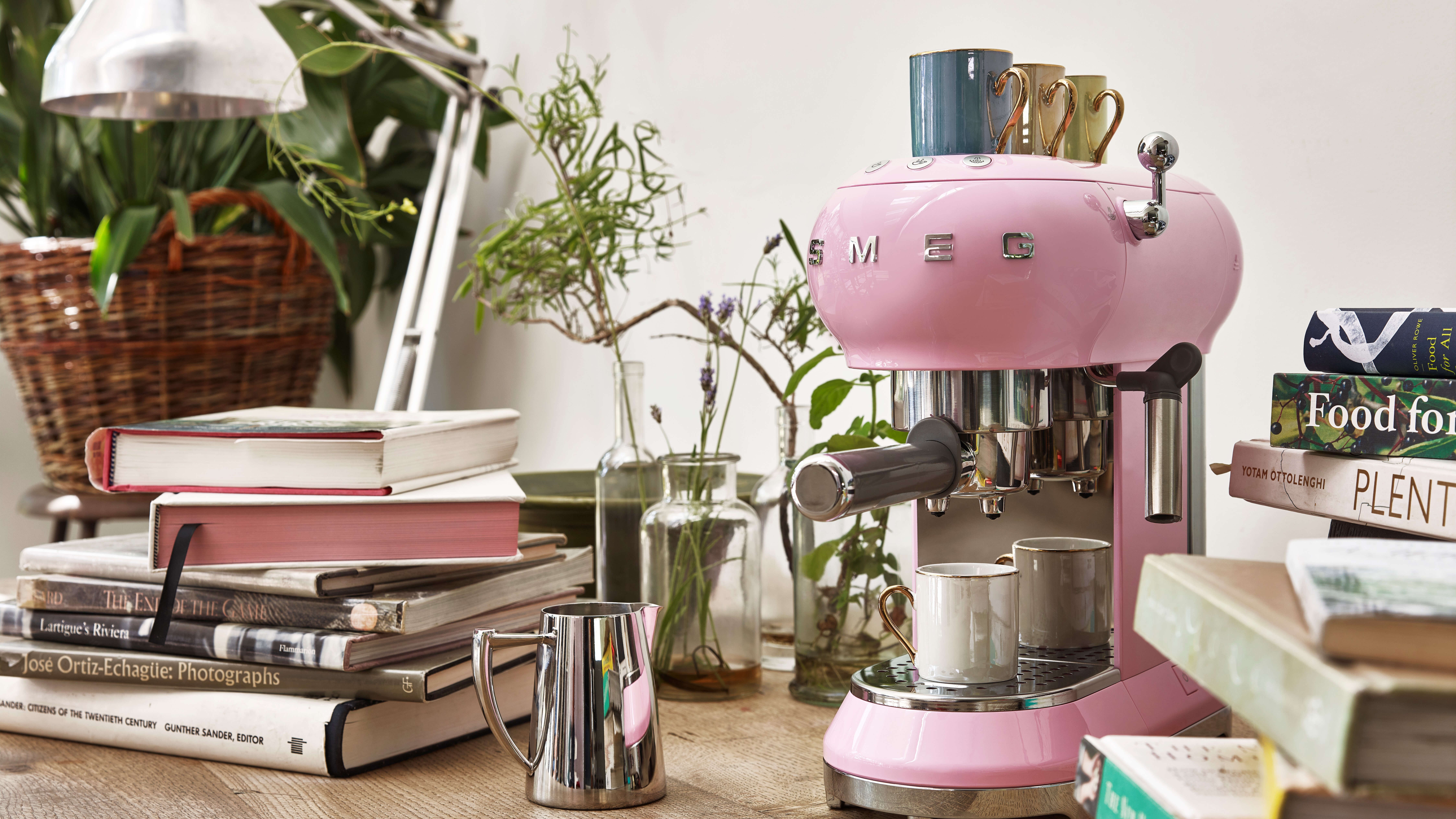
This is a straightforward machine to use, hence I’d recommend it for beginners who are just starting the journey of producing barista-style coffee at home. But, if you’re a coffee connoisseur looking for an authentic barista-style machine, this isn’t for you; there simply aren’t enough adjustable settings.
It’s not the most robust espresso machine on the market, but it does tick boxes if you’re looking for something a bit different to the bland appliances in everyone else’s kitchen. But keep in mind, you’re paying extra for the style and appearance.
How We Test
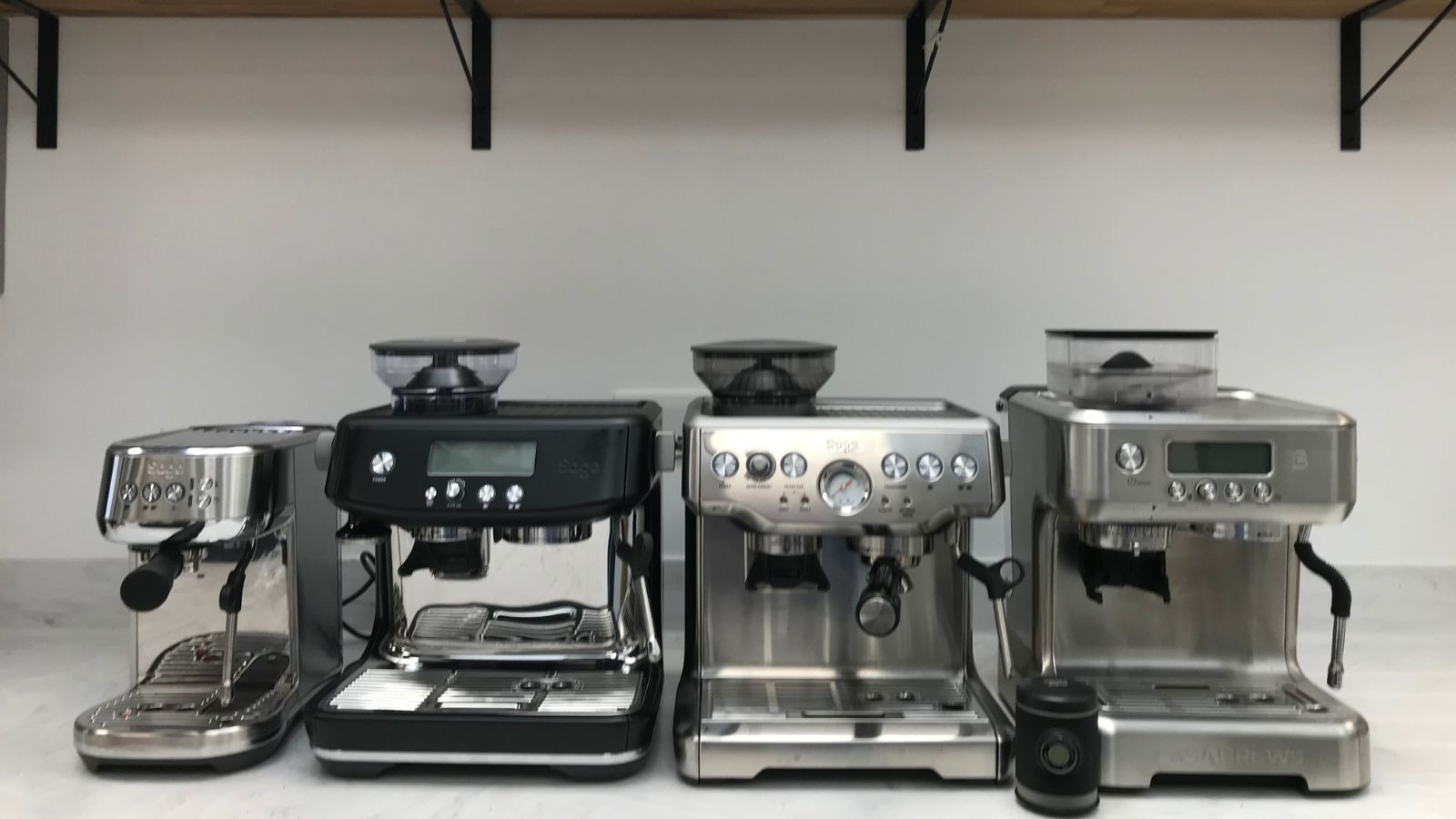
We take all of our espresso machines to our test kitchen, so we can replicate domestic use of every machine. It's also the perfect place to test the limits of each machine, so we make sure that we do. If a machine boasts a specific feature, we'll test it. We'll also look at day-to-day espressos and Americanos too. Most importantly, we always let you know how the coffee tastes.
We make notes on the whole process, from unboxing to cleaning, storage, and maintenance, so that you know everything you need to before making a purchase. If you'd like to know more, we have a page dedicated to how we test coffee makers.
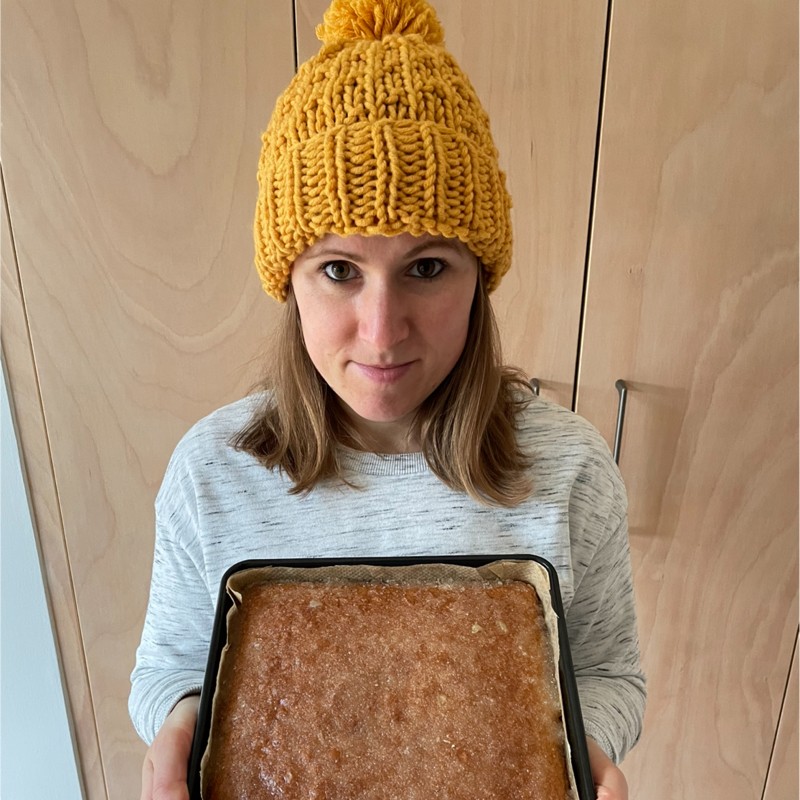
Helen McCue is a freelance contributor who trained as a home economist. After starting her career in the food industry, she moved into home appliance reviews, utilizing her cooking skills and experience to put all kinds of products to the test, and over the years has reviewed hundreds of home and kitchen appliances for a variety of publications.
She’s a reformed tea drinker who now needs a minimum of two coffees to start the day. She reviewed this coffee maker at home, using it every day for a week before sending it back to the brand.
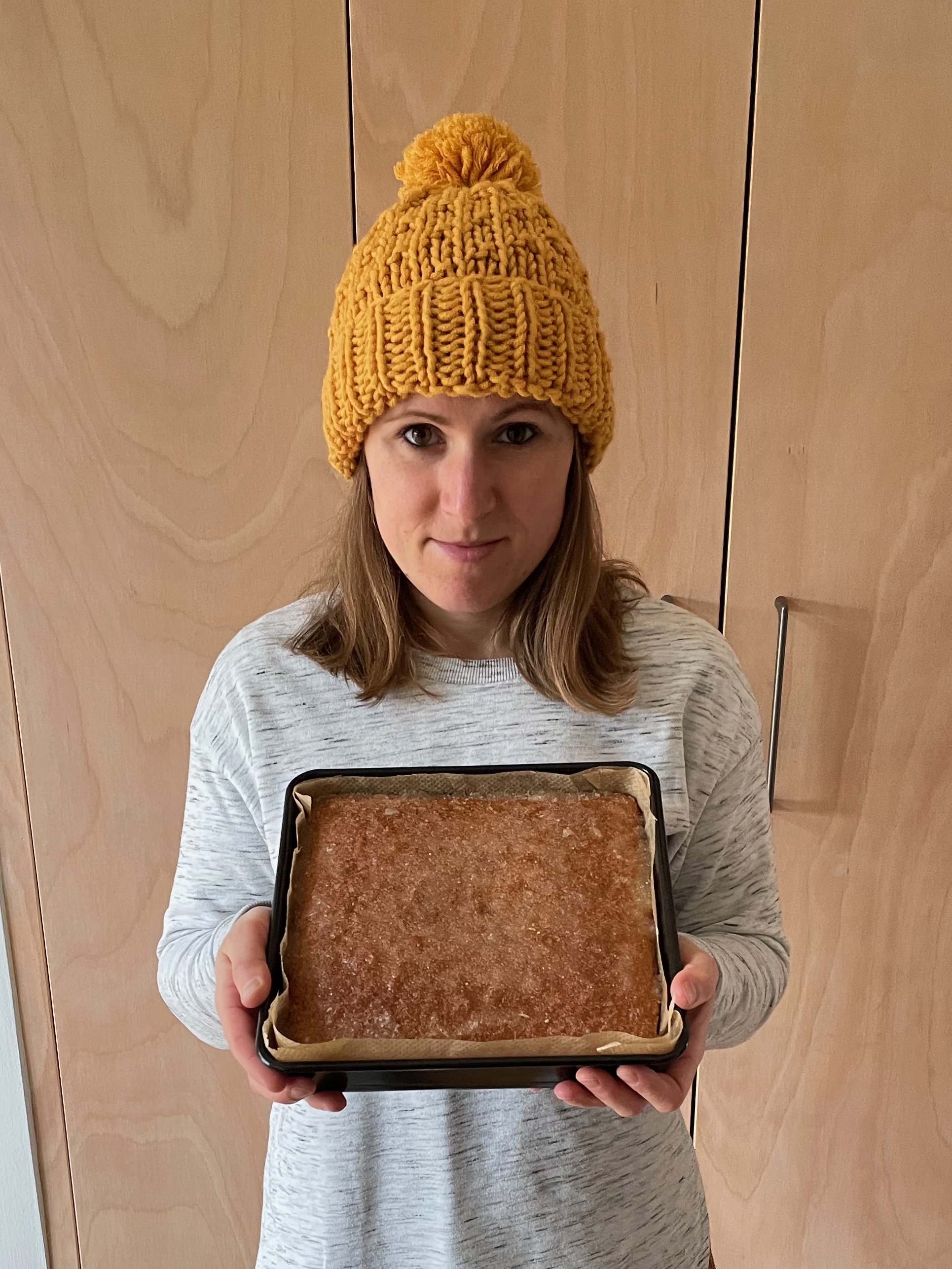
Helen McCue is a freelance contributor who trained as a Home Economist. After starting her career in the food industry, she moved into home appliance reviews, utilising her cooking skills and experience to put all kinds of products to the test, and over the years has reviewed hundreds of home and kitchen appliances for a variety of publications.
Having completely renovated her current house, Helen reviews kitchen appliances from her open plan kitchen at home in a beautiful Berkshire village. When she’s not working, Helen can be found enjoying the local countryside or dreaming about her next house renovation project.
- Laura HoneyeCommerce Editor